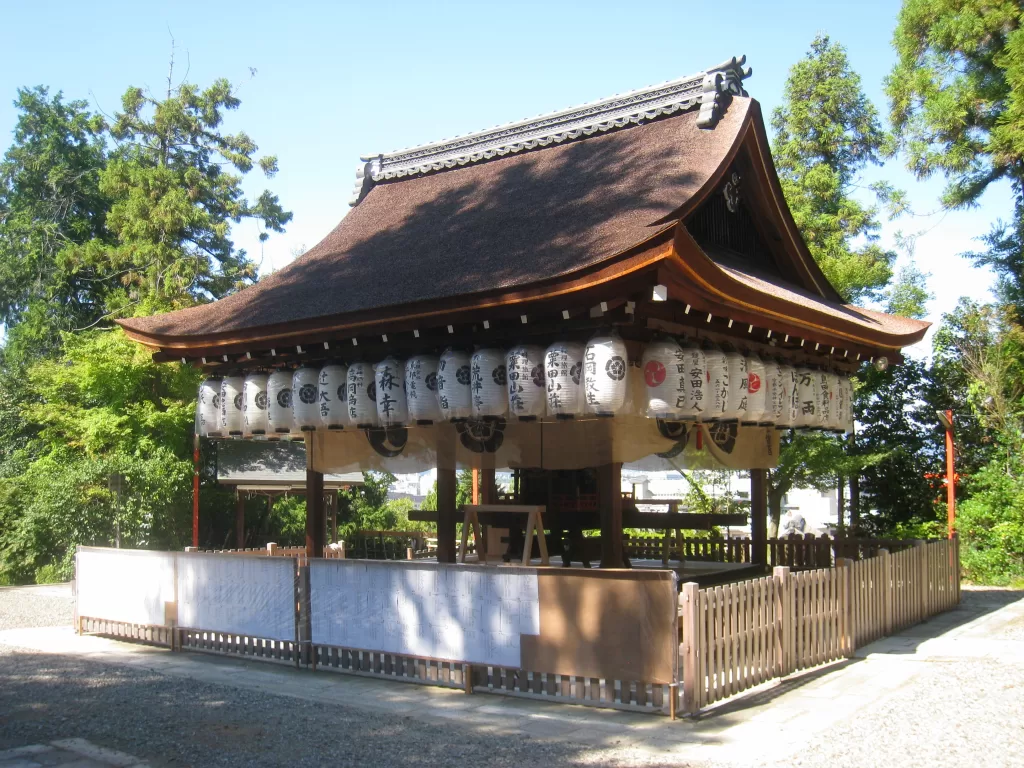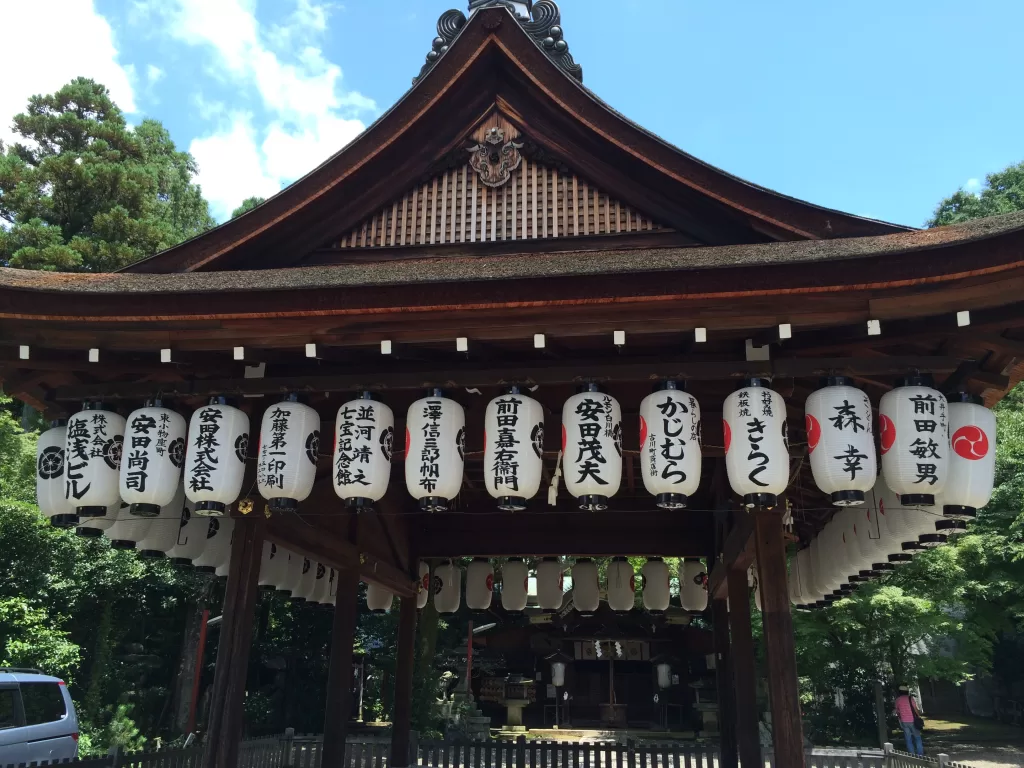Awata Taisai: Celebrating Kyoto’s History and Culture Through the Grand Festival

Origins and History of Awata Shrine
Awata Shrine, a historic Shinto shrine believed to have been founded in 876, lies on the eastern side of Kyoto. It used to be part of a Shinto-Buddhist complex around its neighbor Shoren-in, a well-endowed temple with close imperial connections. Although not as well-known as other shrines in the city, Awata has played an important role in Kyoto’s history.
The shrine was the tribal shrine of the Awata clan who lived in the area before Kyoto was built in 794. Dedicated to Susanoo no Mikoto, it is said to provide protection from calamity and safe travels. The shrine once played a significant role as the protector of the eastern side of the city during the days of the Tokaido highway, which ran from Edo (Tokyo) to Sanjo Bridge nearby.
The Awata Festival
Celebrating Ancient Traditions Through Vibrant Rituals
Awata Taisai is the shrine’s biggest festival, held annually on the second weekend of October. Comprising five distinct Shinto rituals and events, it consists of Oide Matsuri, Yowatari Shinji Ceremony, Shinkosai Festival, Kankosai Festival, and finally Reidaisai on October 15th.
Yowatari Shinji Ceremony: Walking With Lanterns
Yowatari Shinji takes place after Oide Festival and involves groups holding “Awata huge lanterns (Awata daitourou)” while parading around the shrine. University students in Kyoto create these lanterns with traditional Japanese paper painted and shaped into mythological creatures and deities that reference oral tradition.
At nighttime during Reiken Ceremony, daitōrō lanterns come to life when lit up from the inside. Deities such as Immovable Wisdom King Fudō Myō’ō and Lucky God Ebisu, along with the fearsome Ox-Headed Heavenly King, serpent-like Onamuchi, and zodiac animals participate in this procession of shrine treasures and torches.
Shinkosai Festival: Divine Procession Through the Streets
Shinkosai is held to celebrate carrying the shrine’s god out in a portable shrine (omikoshi) and surveying their neighborhood. Awata Shrine’s Taisai features not only an omikoshi but also eighteen sacred kenboko (sacred polearms) with unique designs said to ward off evil spirits.
During Shinkosai Festival, more than 200 people carry these huge Mikoshi and parade around the town. The bearers skilfully make the tall weapons shake while ringing bells at their tops. Kenboko bearers purify the parade road, balancing these 40-60 kilogram, 7-8 meter long spears well during their march. The whole spectacle makes Awata Taisai a must-see event in October.
Connecting Shinto and Buddhist Traditions
An exceptional aspect of Awata Taisai is the blending of Shinto and Buddhist ceremonies. During the Reiken Ceremony, priests from Awata Shrine and monks from Chion-in Temple come together to pay respect to Uryūseki, a sacred stone. The ceremony involves walking around the stone three times as a way to give thanks to the god of Awata who descended.

Enjoying Awata Taisai: Participating in a Momentous Event
The overall quality of processional elements, as well as a large number of participants in Awata Taisai, speaks to the former grandeur of the shrine. When visiting Kyoto in October, do not miss this historic event that celebrates culture, heritage, and the unique connection between Shinto and Buddhist traditions. The Awata Taisai provides an insight into the rich history of Japan while offering a colorful and spectacular display of ancient rituals and processions. It’s one of the most fascinating Kyoto events in October. If you’re planning to visit Kyoto in October, check out the Ningyō Kuyō ceremony.